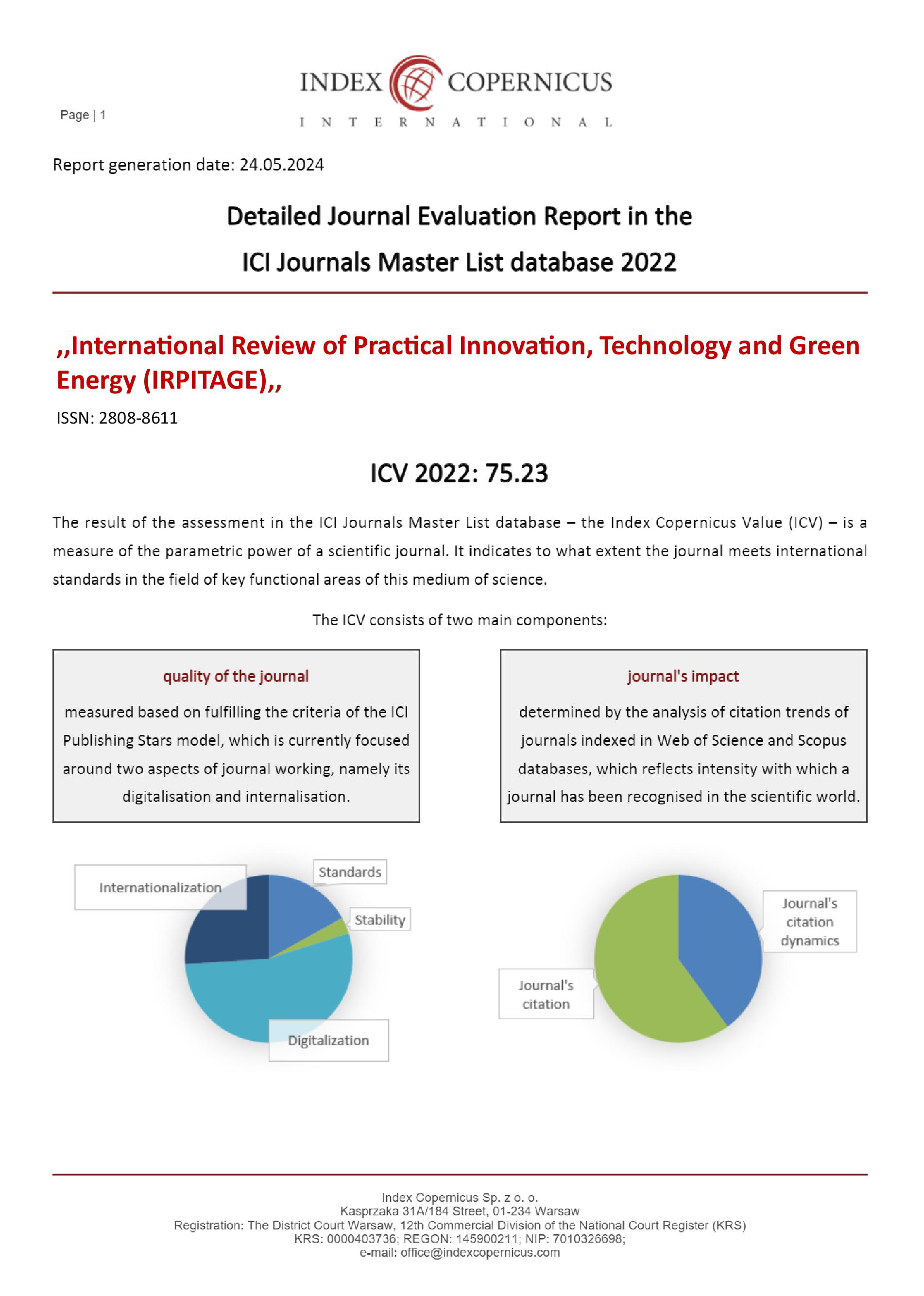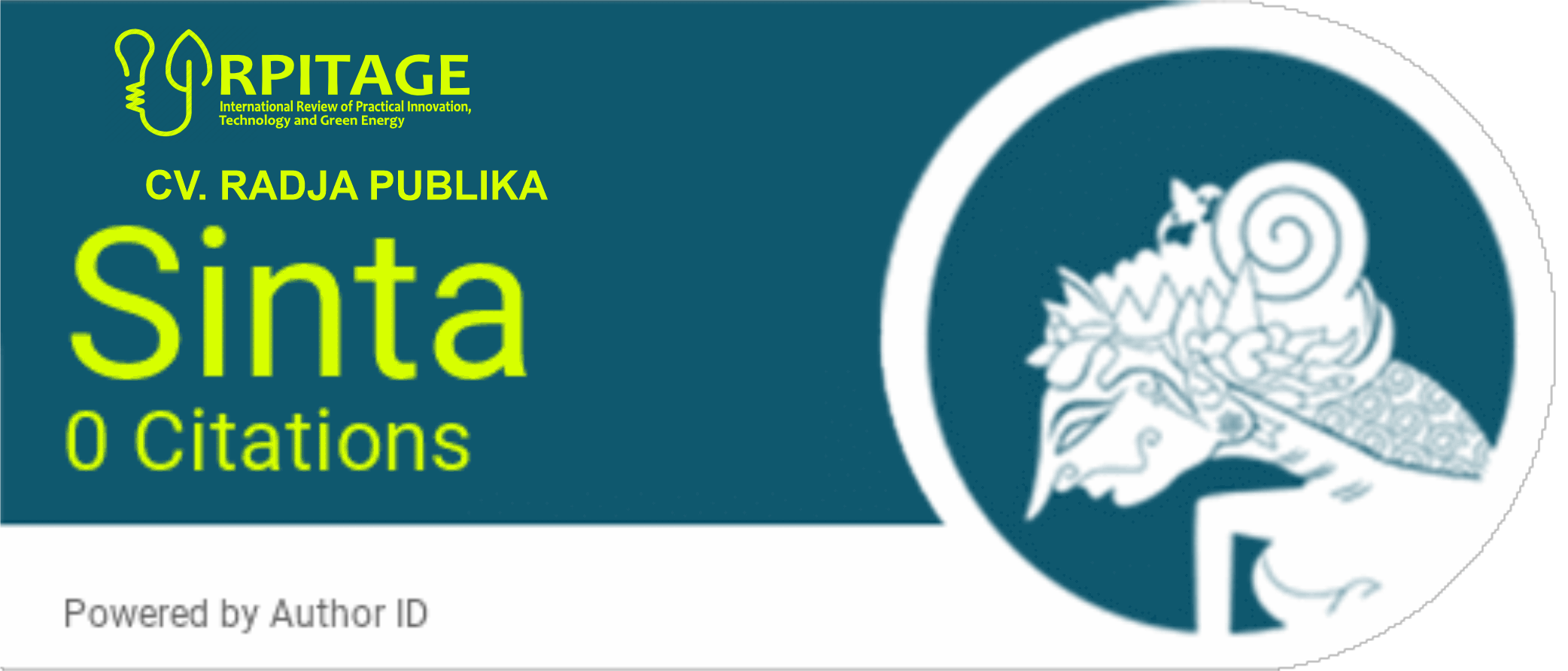EFFECTIVENESS OF SOME NON PATHOGENIC ENDOPHYTIC BACTERIA NUTMEG ON VIABILITY OF ORIGIN PLANT SEED RICE (Oryza sativa L)
Main Article Content
Saiful Mahdi
Danar Hadisugelar
Dianawati
Afriyani
Safrizal
This study aimed to determine the effectiveness of several non-pathogenic endophytic bacteria isolated from nutmeg plants on the viability of rice seeds. The experimental design used was a non-factorial completely randomized design (CRD) with three replications. The study included 14 endophytic bacterial treatments and one control. The research was conducted at the Biological Control Laboratory, Plant Protection Study Program, Faculty of Agriculture, Syiah Kuala University, Banda Aceh, from August 2023 to September 2023. The results showed that the application of non-pathogenic endophytic bacteria from nutmeg had a highly significant effect on rice seed viability, particularly on growth potential and germination. The highest seed viability was observed in the treatment with the bacterial isolate S - S AG 1 I. Endophytic bacterial isolates from nutmeg plants were proven to enhance the viability of Ciherang rice seeds, especially in terms of growth potential and germination. The isolate S - S AG 1 I produced the best results, with a growth potential of 84.4% and germination rate of 77.8%
Chaudhary, P., Agri, U., Chaudhary, A., Kumar, A., & Kumar, G. (2022). Endophytes and their potential in biotic stress management and crop production. Frontiers in Microbiology, 13 (October), 1–22. https://doi.org/10.3389/fmicb.2022.933017
Fadiji, A. E., & Babalola, O. O. (2020). Elucidating Mechanisms of endophytes used in plant protection and other bioactivities with multifunctional prospects. frontiers in bioengineering and biotechnology, 8(may), 1–20. https://doi.org/10.3389/fbioe.2020.00467
Harni, R., & Ibrahim, M. S. D. (20211). Potensi bakteri endofit menginduksi ketahanan tanaman lada terhadap infeksI Meloidogyne incognita. Jurnal Penelitian Tanaman Industri, 17(3), 118–123. https://doi.org/10.21082/jlittri.v17n3.2011.118-123
Herlina, L., Pukan, K. K., & Mustikaningtyas, D. (2017). The endophytic bacteria producing IAA (Indole Acetic Acid) in Arachis hypogaea. Cell Biology and Development, 1(1), 31–35. https://doi.org/10.13057/cellbioldev/v010106
Istifadah, N., Pratama, N., Taqwim, S., & Sunarto, T. (2018). Effects of bacterial endophytes from potato roots and tubers on potato cyst nematode (Globodera rostochiensis). Biodiversitas, 19(1), 47–51. https://doi.org/10.13057/biodiv/d190108
Kandasamy, G. D., & Kathirvel, P. (2023). Insights into bacterial endophytic diversity and isolation with a focus on their potential applications –A review. Microbiological Research, 266(March 2022), 127256. https://doi.org/10.1016/j.micres.2022.127256
Kuźniar, A., Kruczyńska, A., Włodarczyk, K., Vangronsveld, J., & Wolińska, A. (2025). Endophytes as Permanent or Temporal Inhabitants of Different Ecological Niches in Sustainable Agriculture. Applied Sciences (Switzerland), 15(3), 1–29. https://doi.org/10.3390/app15031253
Lestari, P., Susilowati, D. N., & Riyanti, E. I. (2007). Pengaruh Hormon Asam Indol Asetat yang Dihasilkan Azospirillum sp. terhadap Perkembangan Akar Padi. Jurnal AgroBiogen, 3(2), 66. https://doi.org/10.21082/jbio.v3n2.2007.p66-72
Leveau, J. H. J., & Lindow, S. E. (2005). Utilization of the plant hormone indole-3-acetic acid for growth by Pseudomonas putida strain 1290. Applied and Environmental Microbiology, 71(5), 2365–2371. https://doi.org/10.1128/AEM.71.5.2365-2371.2005
Mburu, S. W., Koskey, G., Njeru, E. M., & Maingi, J. M. (2021). Revitalization of bacterial endophytes and rhizobacteria for nutrients bioavailability in degraded soils to promote crop production. AIMS Agriculture and Food, 6(2), 496–524. https://doi.org/10.3934/agrfood.2021029
Mehdipour Moghaddam, M. J., Emtiazi, G., & Salehi, Z. (2012). Enhanced auxin production by Azospirillum pure cultures from plant root exudates. Journal of Agricultural Science and Technology, 14(5), 985–994.
Mohite, B. (2013). Isolation and characterization of indole acetic acid (IAA) producing bacteria from rhizospheric soil and its effect on plant growth. Journal of Soil Science and Plant Nutrition, 13(3), 638–649. https://doi.org/10.4067/S0718-95162013005000051
Najjar, A. A. (2025). Therapeutic Potential of Endophytic Microbes: Emphasizing Both Fungal and Bacterial Endophytes. Applied Microbiology (Switzerland), 5(1), 1–15. https://doi.org/10.3390/applmicrobiol5010005
Puri, A., Padda, K. P., & Chanway, C. P. (2018). Nitrogen-Fixation by Endophytic Bacteria in Agricultural Crops: Recent Advances. Nitrogen in Agriculture - Updates, 5(2), 73–94. https://doi.org/10.5772/intechopen.71988
Putri, M. F., Fifendy., M., & Putri., D. H. (2018). Diversitas bakteri endofit pada daun muda dan tua tumbuhan andaleh (Morus macroura miq.) Eksakta, 19(1), 126–130.
Rismawati, R., Budi, I. S., & . M. (2024). Efektivitas Bakteri Endofit Asal Lahan Basah untuk Menekan Penyakit Hawar Daun Bakteri (Xanthomonas oryzae) pada Padi Beras Merah (Oryza nivara L.). Jurnal Proteksi Tanaman Tropika, 7(1), 789–797. https://doi.org/10.20527/jptt.v7i1.2401
Rori, C. A., Kandou, F. E. F., & Tangapo, A. M. (2020). Aktivitas Enzim Ekstraseluler dari Bakteri Endofit Tumbuhan Mangrove Avicennia marina. Jurnal Bios Logos, 11(2), 48. https://doi.org/10.35799/jbl.11.2.2020.28338
Singh, A. K., Sharma, R. K., Sharma, V., Singh, T., Kumar, R., & Kumari, D. (2017). Isolation, morphological identification and in vitro antibacterial activity of endophytic bacteria isolated from Azadirachta indica (neem) leaves. Veterinary World, 10(5), 510–516. https://doi.org/10.14202/vetworld.2017.510-516
Teja, B. S., Jamwal, G., Gupta, V., Verma, M., Sharma, A., Sharma, A., & Pandit, V. (2025). Biological control of bacterial leaf blight (BLB) in rice–A sustainable approach. Heliyon, 11(2), e41769. https://doi.org/10.1016/j.heliyon.2025.e41769
Thakuria, D., Talukdar, N. C., Goswami, C., Hazarika, S., Boro, R. C., & Khan, M. R. (2004). Characterization and screening of bacteria from rhizosphere of rice grown in acidic soils of Assam. Current Science, 86(7), 978–985.
Ullah, A., Nisar, M., Ali, H., Hazrat, A., Hayat, K., Keerio, A. A., Ihsan, M., Laiq, M., Ullah, S., Fahad, S., Khan, A., Khan, A. H., Akbar, A., & Yang, X. (2019). Drought tolerance improvement in plants: an endophytic bacterial approach. Applied Microbiology and Biotechnology, 103(18), 7385–7397. https://doi.org/10.1007/s00253-019-10045-4











